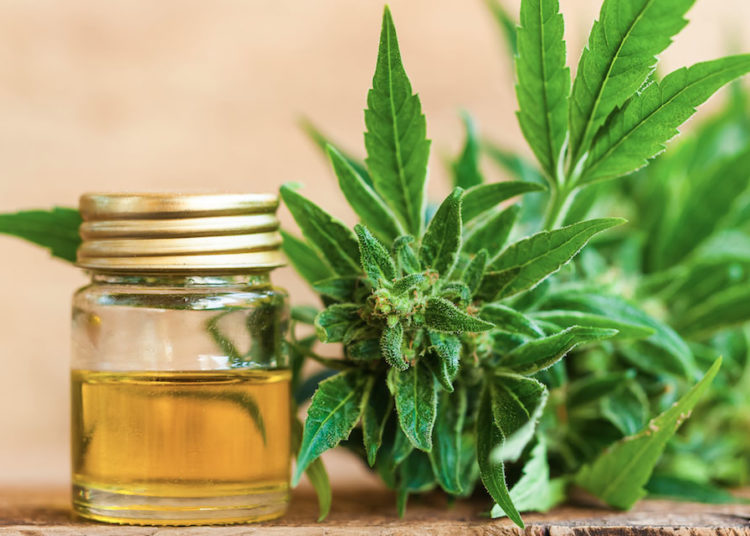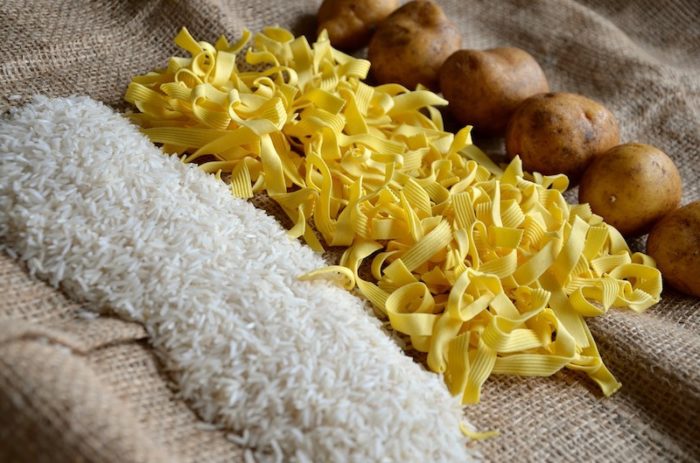Eight thousand calories a day, diarrhea medication, saltwater, and CBD are just part of the unusual dietary regimen of two of the World’s Strongest Man athletes Luke and Tom Stoltman.
(The diarrhea meds aren’t because of diarrhea, it’s because the minerals and electrolytes are surprisingly great for reducing cramping. But more on that later.)
Now, these guys are worth paying attention to. We saw the Stoltmans compete at the 2019 World’s Strongest Man where they made history as the first brothers to compete against one another in the WSM finals. (Luke came 7th and Tom came 5th.) Later that year they were responsible for another first when they both podiumed at World’s Ultimate Strongman with Luke placing second and Tom third.
We were lucky enough to sit down with the brothers to learn everything we could about their diet and supplement game, covering:
- Calories
- Favorite Foods and Cheat Meals
- Macros & Carb Cycling
- Supplements
Stoltman Brothers’ Calories
Their weight and calories are about the same, even though Tom is almost half a foot taller than Luke.
Luke Stoltman
Height: 6’3″
Weight: 342 pounds
Calories: 6 to 8,000
Tom Stoltman
Height: 6’8″
Weight: 342 pounds
Calories: 6 to 8,000
Tom might increase his calories to over 9,000 in the week or two leading up to a competition.
“It’s hard, it’s tough to eat 8,000 calories day in, day out,” says Luke. “You just feel so bloated, so horrible eating that food. Some guys can do it, Brian (Shaw) and Hafthor (Bjornsson) just do it for fun now, but I need a little more practice.”
https://www.instagram.com/p/B5ksuyMldYr/
Stoltman Brothers’ Favorite Foods and Cheat Meals
There aren’t many foods Luke limits; here’s a sample breakfast:
- Porridge
- Fruit
- Honey
- Jam
- Eggs
- Meat
In fact, he eats 1 to 1.2 kilograms (2.2 to 3.3 pounds) of meat per day, and about the same amount of carbohydrates per day as well.
Tom, meanwhile, keeps things a bit stricter, noting that since he started eating so many calories he has trouble eating too much of certain foods. He emphasizes chicken, meat, rice, and pasta, noting that he can’t eat brown rice or bread or his “belly swells out.”
“Dairy as well, my belly goes a bit funny,” he says. When I started eating all those calories, the bread wouldn’t sit well, dairy wouldn’t sit well, even shakes don’t sit well with me sometimes. We did a burger challenge a few days before visiting Iceland and I could not get off the toilet. My guts were bad. My body doesn’t take very well to changes in food so I keep to what I know and it works for me.”
It’s actually not uncommon to hear strongmen and other athletes who eat a lot of food report that when they cranked up their calories, they found that some foods didn’t digest as easily as they used to. Once you’ve magnified the amount of food you eat, it might magnify little digestive hiccups that might have gone unnoticed on a more normal 2 or 3,000 calories per day. (This is the crux of the Vertical Diet followed by World’s Strongest Man winners Thor Bjornsson and Brian Shaw.)
Their main challenge, though, is just eating enough calories. It’s especially hard for Luke because he works offshore for a company that does a lot of work in the North Sea, so he’ll spend a lot of time unable to eat more than what he’s served.
But the two brothers make up for the occasional low-calorie days with regular cheat days — so regular they’ll happen two or three times a week, especially at the end of long days of training or competition when they need “big, dirty calorific meals.”
“We have takeaways, we have pizzas, those are the days we’re struggling to consume that kind of bland food day in, day out, and we need to make up the calories,” says Luke.
“So maybe a couple of days a week we throw in a dirty, bulky meal, especially after an events day when we won’t eat anything of great substance over four or five hours of training,” adds Tom. “That’s when we get takeaways, Indian, Chinese, a big dirty meal that will really sort us out after a heavy session.”
[Related: The Pros and Cons of Cheat Meals for Strength Athletes]
Stoltman Brothers’ Macros and Carb Cycling
The brothers don’t track their macronutrients (protein, carbs, and fats) as religiously as a lot of other strongmen.
“If I were tracking it too much, I’d get a bit too beat up on myself I think, because if I can’t follow a set target I couldn’t follow, that it wouldn’t work for me,” says Luke.
Tom, however, does practice an unusual form of carbohydrate cycling: lower carbs on training days and higher carbs on rest days. Normally, people who cycle carbs do it the other way around.
“On the days I train my protein’s high, my carbs are like medium, and fats are medium, but then it’s opposite when I’m not training,” he says. “On rest days, protein’s low and carbs are high, just to get some extra fuel and so I can recover quicker.”
But Tom trains in the late afternoon and will eat plenty of carbohydrates afterward, so one could think of the “rest day” carbs as part of his post-workout refuelling. He’ll be low-ish carb until he trains, then high carb after he trains and the following day.
Tom will also go almost completely without carbohydrates for three days during the week of a competition.
“If I’m a week out, on Monday, Tuesday, and Wednesday I’ll have no carbs at all. Instead of chicken and rice, it’ll be a hundred grams of chicken or mince five times a day for three days,” he explains. “Then on Thursday, Friday, and Saturday everything will be tripled. That’s when my carbs go sky high, eating 700 grams of cereal, chicken, rice, everything will be high. It worked for Britain’s, it worked for Europe’s, it worked for Scotland’s, it worked for World’s.”
[Related: The Insider’s Guide to Thor Bjornsson’s Strongman Diet]
https://www.instagram.com/p/B4MfTpugaF-/
Stoltman Brothers’ Supplements
Finally, let’s talk supplements.
Sometimes they’ll make meal replacements of whey and oats and spinach, sometimes they take pre workouts and creatine (but who doesn’t?), Tom also takes BCAA supplements every day because he says they help with recovery.
“My energy levels just stay higher than if I were to drink normal water,” he says. “And it adds flavor to my water as well, doesn’t it?”

CBD
They’re also really big on CBD. That’s cannabidiol, a compound found in cannabis that has some pretty interesting links to pain relief, improved recovery, reduced inflammation, and better sleep.(1)(2)(3)(4)(5)(6)(7)(8)
They like to spray about 100 milligrams of CBD under their tongue before bed and claim it helps with recovery, plus they use CBD-based ointments on their joints and tendons.
“I used to get quite bad tendinitis and I just applied it every day, I wasn’t really that optimistic about it all to be honest,” says Luke. “But since then my tendon pain has really improved quite a lot.”
[Related: The Athlete’s Guide to CBD Supplements]
https://www.instagram.com/p/B1GMb-Cg_2p/
Hydration
Many sports nutritionists these days feel that athletes tend to undervalue sodium, a mineral that boosts intracellular water retention, maintains fluid balance, and helps muscles contract. While many feel they should follow a low sodium diet, athletes who sweat a lot need to put the work in to ensure they’re replacing the salt that’s lost through sweat.
For context, the recommended intake is 2.3 grams but some studies have seen athletes lose up to 7 grams per hour when they’re working hard.(9)
“I throw some salt in some water a couple times a day and that transformed my body,” says Luke. “It was pretty incredible, I was quite shocked by how much that changed for me.”
[Related: The Surprising Benefits of Salt for Strength Athletes]
But other minerals and electrolytes are also important for hydration, which is why the brothers have the unusual strategy of taking Dioralyte, sachets of sodium chloride and potassium chloride and a few other ingredients that are intended for people suffering from diarrhea. Diarrhea kills millions every year because it’s so dehydrating, but the brothers take it because they say it helps to rehydrate and prevent muscle cramps.
“We use it to up our minerals and electrolytes maybe three days out before a competition,” says Luke. “And that seemed to stop the cramping. And that was awesome, because it’s brutal when you’re cramping up during a deadlift or log press. I guess those supplements aren’t your traditional picks, but that’s something Tom and I incorporate a week or so pre competition. That, the CBD oil, and the salt have certainly given us a bit of a performance boost, I think.”
https://www.instagram.com/p/B2Kk0IqgrEX/
Wrapping Up
That’s everything on how two of the world’s strongest men and certainly Scotland’s current most successful strongmen fuel their world class performances. There are a lot of great, actionable tips here for any athlete — just remember to speak with your doctor before making any changes to your nutrition and supplement regimen.
[Subscribe to the Stoltman Brothers on YouTube.]
Featured image via @luke.stoltman on Instagram.
References
1. Burstein S, et al. Cannabidiol (CBD) and its analogs: a review of their effects on inflammation. Bioorg Med Chem. 2015 Apr 1;23(7):1377-85.
2. Klauke AL, et al. The cannabinoid CB₂ receptor-selective phytocannabinoid beta-caryophyllene exerts analgesic effects in mouse models of inflammatory and neuropathic pain. Eur Neuropsychopharmacol. 2014 Apr;24(4):608-20.
3. Woodhams SG, et al. The role of the endocannabinoid system in pain. Handb Exp Pharmacol. 2015;227:119-43.
4. Philpott HT, et al. Attenuation of early phase inflammation by cannabidiol prevents pain and nerve damage in rat osteoarthritis. Pain. 2017 Dec;158(12):2442-2451.
5. Shannon S, et al. Cannabidiol in Anxiety and Sleep: A Large Case Series. Send to Perm J. 2019;23:18-041.
6. Zuardi AW, et al. Effects of ipsapirone and cannabidiol on human experimental anxiety. J Psychopharmacol. 1993 Jan;7(1 Suppl):82-8.
7. Bergamaschi MM, et al. Cannabidiol reduces the anxiety induced by simulated public speaking in treatment-naïve social phobia patients. Neuropsychopharmacology. 2011 May;36(6):1219-26.
8. Hammell DC, et al. Transdermal cannabidiol reduces inflammation and pain-related behaviours in a rat model of arthritis. Eur J Pain. 2016 Jul;20(6):936-48.
9. Godek SF, et al. Sweat rates, sweat sodium concentrations, and sodium losses in 3 groups of professional football players. J Athl Train. 2010 Jul-Aug;45(4):364-71.
